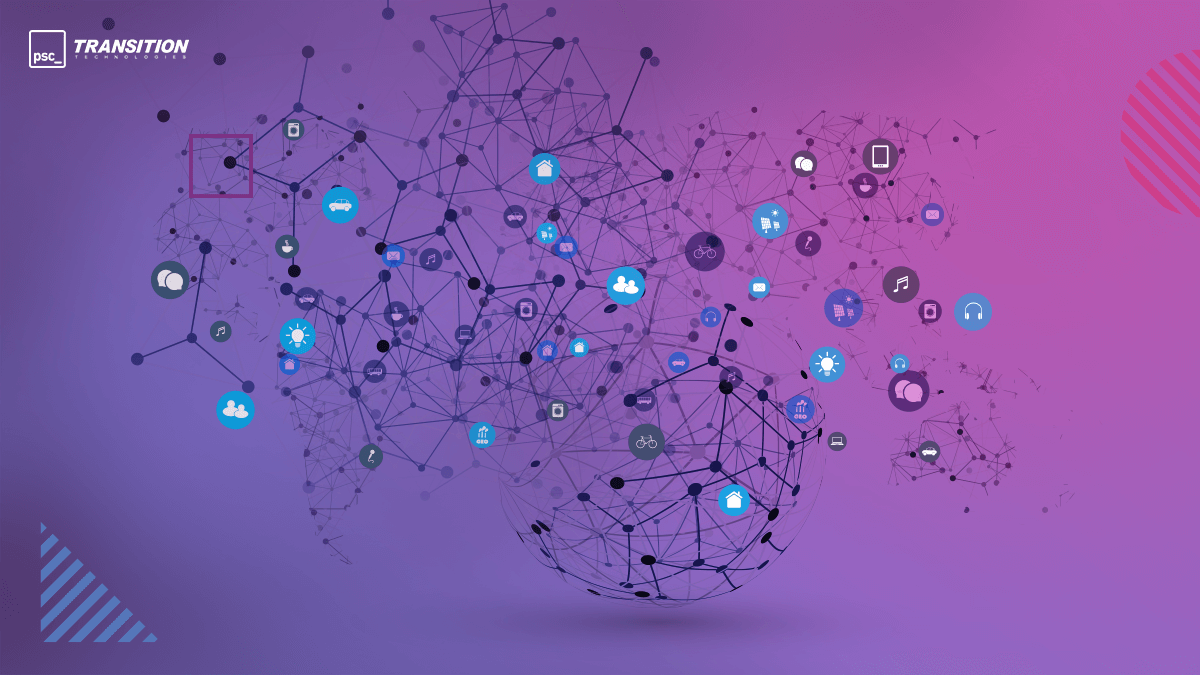The Industrial Internet of Things is currently the leading branch of digital transformation. Connecting the existing machine park or intelligent product with the capabilities of cloud computing gives opportunities to gain a huge advantage over the competition. Using new technologies can improve the business and make it more profitable, more controllable, more flexible, and more transparent.
Cloud computing – what is it and what are its benefits?
In the past, every company implementing IT solutions had to spend a lot of money on infrastructure that had to be maintained in dedicated, specially prepared rooms at headquarters or production plant. Currently, it is an unnecessary expense, because it is possible to use the services of public cloud infrastructure providers.
In times of systems and data unification, the need to collect them in one place more and more often arises. In the standard on-premise model, the systems are located on the factory side, which may be demanding for other plants – collecting and combining data is much more difficult for practical reasons. What’s more, some systems also require separate instances in such a configuration, which increases the costs of both infrastructure and licensing. In the case of the cloud, we unify and make them available in one central place, which eliminates some of the problems and costs resulting from the price of infrastructure and its maintenance.
Thanks to this solution, we pay only for what we use, without losing money on our own expensive infrastructure. We gain the possibility of flexible scaling adjusted to our business.

ThingWorx platform
The ThingWorx platform solves common problems affecting various industry sectors. From remote control of devices, its optimization, to the visualization of information about these devices. Thanks to the appropriate IoT platform, we gain powerful tools to improve our business. Good IoT platforms support all data-related processes: from collecting, aggregating, persisting, performing various operations on its, to data transfer as part of the integration with other systems. Using the latest technologies, we can adapt our business to the speeding world.
Using the IoT platform allows you to avoid the high costs of creating something from scratch. What’s more, thanks to entering the technological stack offered by PTC, we have a choice of a very large ecosystem of other products that connect natively and simply, increasing the value of the entire solution. An example would be the industrial connectivity layer and the industrial connectivity auxiliary functions – Kepware. By adding analytical and AR tools to that, we have a comprehensive solution that would take several years to build from nothing using our resources.
Thanks to the constant monitoring of devices, we can manage their work, seeing it from a perspective that gives us a better understanding of this process. For example, we can predict failures and prevent them through scheduled maintenance. It is possible to analyze the operation of devices and (on this basis) predict their future potential failures. IoT gives us the ability to display important data, for example from the production line. Thanks to this, we increase the productivity and efficiency of operators and the production line itself – which translates into the entirety of our business.
ThingWorx connection with the Azure Cloud
The ThingWorx platform extended with the possibilities of cloud computing is a response to the challenges of modern business. Using both solutions at the same time gives you many more possibilities. We have tools that will not only improve our business but can completely change it. Thanks to such a comprehensive approach to data, we can notice patterns that are not immediately visible, but strongly affect our daily work.
ThingWorx is software that perfectly copes with displaying collected and processed data. Thanks to easy-to-create user screens, we can see all the necessary data in a form that best supports the work. It’s the ability to see the status of our machines or processes remotely and without the need to visit the production hall each time. It also allows us to reduce the time needed for thorough analysis and make decisions based on facts and real data, not assumptions.

The data are sent to the cloud, where can be safely stored and converted in real time thanks to enormous computing power. Azure’s rich public cloud portfolio includes a variety of services that will help you solve your security, collection, or data access problems. IoT Hub is one of Azure’s core services for connectivity and message transfer between devices and the cloud. This service is often the main channel of two-way communication, allowing for the scalable and secure transmission of messages, data, files, or information about events.
ThingWorx IoT hub Connector – What problem does it solve?
The ThingWorx IoT Hub Connector is the bridge that connects the ThingWorx platform to the Azure Cloud (more specifically to Azure IoT Hub). It provides secure (certificate-based) communication, thanks to which we can use the enormous possibilities of cloud computing. It is also a very extensive, but generic solution.
ThingWorx IoT hub Connector supports the following functions:
- Secure connection between the ThingWorx Platform and the cloud – applying certificates to groups of devices or symmetric keys / TPM chipsets to enroll individual devices.
- Transferring ThingWorx Platform data from and to the cloud – extensive cloud analysis and Machine Learning allow you to predict trends, potential errors, etc.
- Access to data from anywhere in the world – through the public cloud.
- Real-time data transfer – data change on the ThingWorx side allows sending updated telemetry data to the cloud
- Optimization of business processes – no investment in equipment needed for data operations (ML, analysis, aggregates, KPI, etc.), we only pay for what we use
- Downloading data from the cloud and storing them on the ThingWorx Platform side – thanks to the possibility of combining the connector to services such as EventHub or ServiceBus, the client is able to download data that is generated by other devices (reporting to the cloud) directly to the ThingWorx Platform .
- Application in a container – thanks to the use of modern container technologies (Docker), we do not need to run an additional server, configure a virtual machine to be able to run this application. Thanks to the containerization used, it is possible to run the Connector as an application natively operating in the cloud (AppService) or in any other micro-service ecosystem.
By using these features, we can pass our data to any service available in the Azure Cloud. It is also possible to design an architecture that will allow us to make profits at different levels. The public Azure cloud grants, among other things, to predict and plan a service like a specific device in our infrastructure. Thanks to this approach, we are not surprised by the failure, but we can take action in advance. The appropriate prior notification also lets plan repair or service works in the least invasive way for the continuity of the entire solution.
Azure also allows analyzing our data for anomaly detection, which results in cost reduction. Then we see all the anomalies that occur in our data. Additionally, we can integrate the function of SMS or e-mail notifications so that you are always informed about it.

IoT Hub Connector by TT PSC
With the growing demand and the complexity of IoT solutions, there was a need to develop integration between the ThingWorx Platform and IoT Hub. More and more customers using ThingWorx and the cloud see the potential of combining both solutions. Thanks to choosing such a combination, they gain an advantage in their industry, and the profitability of such a solution increases.
Basic functions of the IoT Hub Connector from TT PSC
| IoT Hub Connector by TT PSC |
| Two-way synchronization of ThingWorx <-> Cloud devices |
| Automatic registration and connection through the use of Device Provisioning Services |
| Simple setup |
| Greater flexibility by connecting to both single and multiple IoT Hubs using Device Provisioning Services |
| information about device operation (when device stops working or freezes) |
| High scalability – which results in faster, easier and cheaper implementation of solutions |
Thanks to our Connector, you can reduce the costs associated with creating this type of solution from scratch. Moreover, you have a product written by experienced programmers who know PTC solutions well and are able to connect them with services available in the public cloud. It is a very flexible and scalable product, so adding other functionalities, even specific to a given business case, is easy. By choosing our Connector, you can order additional functionalities in the form of plugins that will further adapt this tool to a specific case.
Write to us
Don’t abuse your own IT resources and use the services of an implementation company that specializes in creating applications for Industry 4.0 using the IoT platform like ThingWorx. If you are looking for a business partner who will implement your concept or would like to start your first IoT project, write to us! We have experience in this field, and our implementations have already helped many companies to optimize production costs and increase the efficiency of existing resources.













